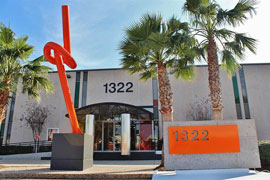 What’s the number one thing most website owners think about? That’s right – getting more traffic to their site. It’s the Holy Grail of website ownership. We spend hours carefully crafting new content for our site, we stress over every page title and meta-description, trying to get everything perfect to attract more site visitors. Heck, we even pay for traffic in the form of Pay Per Click (PPC) ads.
What’s the number one thing most website owners think about? That’s right – getting more traffic to their site. It’s the Holy Grail of website ownership. We spend hours carefully crafting new content for our site, we stress over every page title and meta-description, trying to get everything perfect to attract more site visitors. Heck, we even pay for traffic in the form of Pay Per Click (PPC) ads.
But what about when that website traffic shows up? Will your much sought after visitors find what they’re looking for, or will they quickly hit the back button and move on to your competitors’ site? It’s all too easy to get caught up in the quest for more traffic without thinking of what you’re going to do with it once you get it. Website owners need to put just as much time into keeping visitors on their site as they do driving them there.
For instance, if a visitor searches for “baby panda bears” and clicks through to your site from the search results, they expect to see – you guessed it – baby panda bears. If they don’t, out comes the dreaded back button. When a visitor leaves your website without going beyond the home page, this is called a “bounce.” The percentage of times that this happens on your website is called your “bounce rate.”
Not all short visits are considered bounces
But wait… what if the website visitor just wanted to find my phone number or address?
 It’s true, sometimes a “complete” web visit may not need to go beyond the home page. Perhaps the visitor chose to call your business and only needed the phone number. (Your website does make it easy to find your phone number, right?) Or, maybe they saw your list of services, and it didn’t include what they were looking for, so they saw no need to go any further into your site. You can usually tell if this happened if the visitor stayed on the page for at least 20 seconds.
It’s true, sometimes a “complete” web visit may not need to go beyond the home page. Perhaps the visitor chose to call your business and only needed the phone number. (Your website does make it easy to find your phone number, right?) Or, maybe they saw your list of services, and it didn’t include what they were looking for, so they saw no need to go any further into your site. You can usually tell if this happened if the visitor stayed on the page for at least 20 seconds.
On a side note, this doesn’t only apply to the home page. Remember that search engines crawl and index your content pages as well (assuming you’ve set up your website correctly), so visitors may not enter your website through the home page only. For this reason, proper thought and planning need to be given to your entire website, not just the home page, to make sure that visitors find what they are looking for and are able to quickly take the appropriate action, whether it’s adding an item to their shopping cart or filling out a contact form to request more information. Think of it this way: if you’re having a party at your house, you probably clean up the area by the front door, put out a welcome mat and maybe set a coat rack nearby for convenience. But what happens if a guest unexpectedly comes to the back door? Are you prepared to make that guest feel as welcome and invited as if they came through the front door? Your website has many entrances, and you never know which “door” a website visitor will use to enter your site. That’s why it’s important that your site is properly set up to encourage users to stay a while and find what they’re looking for rather than bouncing.

